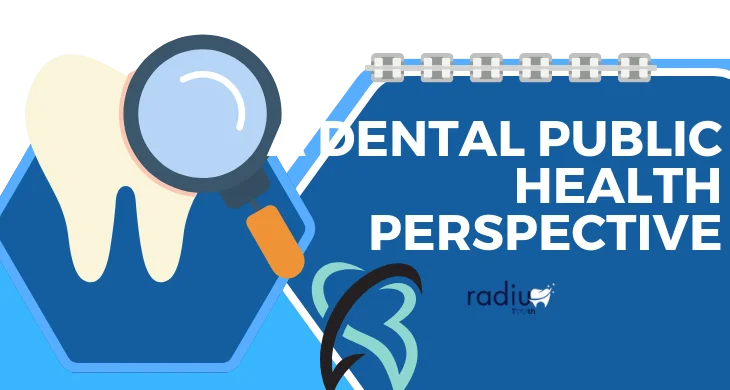In this comprehensive dental public health exploration, we delve into the multifaceted aspects of advancing oral health equity. This perspective emphasizes the vital role of preventive dentistry, community engagement, and addressing health disparities to improve access and overall oral health for all individuals.
Understanding Disparities
Oral health disparities persist & they disproportionately affect marginalized populations. These disparities manifest in higher rates of dental disease & less access to dental care among vulnerable communities. Understanding the root causes of these disparities is the first step in addressing them. Factors such as Income, Education, Race & geography contribute to these disparities, Making it vital to tailor solutions to the unique challenges faced by different populations.
Preventive Dentistry
Preventive dentistry is a cornerstone in reducing oral health disparities. This approach emphasizes regular check-ups, Patient education & early intervention to prevent the escalation of dental issues. By shifting the focus from treatment to prevention. We not only improve oral health outcomes but also reduce the economic burden associated with treating advanced dental diseases.
Community Outreach
Community engagement is a pivotal aspect of dental public health. This section highlights the effectiveness of community-based programs in promoting oral health equity. Initiatives such as free dental clinics, school-based dental education & mobile dental units bring vital care and education to underserved areas, breaking down barriers to access. Through these initiatives, Dental professionals can directly impact the lives of those who face barriers to care due to economic or geographic factors.
Social Determinants of Health
Oral health is inextricably linked with social determinants such as income, Education, housing & access to nutritious food. This section delves into the impact of these social determinants on oral health outcomes. By addressing these underlying factors, Public health practitioners can make a profound difference in advancing oral health equity. Efforts should include initiatives to improve access to education and employment opportunities, Affordable housing & Nutritious food, as these factors are closely connected to overall health & well-being.
Policy and Advocacy
Oral health equity necessitates systemic change. Advocating for policies that support equitable access to dental care is pivotal. Policy changes can have a profound impact on improving oral health outcomes for all. These changes might include expanding Medicaid dental coverage, Supporting community water fluoridation & enhancing regulations related to dental care accessibility. Engaging with legislators & stakeholders is essential to drive policy changes.
Dental Education
The next generation of dental professionals can play a pivotal role in advancing oral health equity. This section emphasizes the need to incorporate equity-focused training within dental education programs. By teaching students to recognize disparities & providing them with the tools to address them. We can prepare a workforce that is equipped to contribute to more equitable oral health outcomes. Dental education should encompass cultural competency, Community engagement & an understanding of the social determinants that impact oral health.
Global Perspectives
Oral health equity is not limited to any one region; it’s a global concern. By examining successful international models, we can draw inspiration & learn from innovative strategies & partnerships. This section highlights effective programs & initiatives from around the world that have made significant progress in advancing oral health equity. Collaborating & learning from international experiences can inform & improve domestic efforts.
FAQ’s
1. What is oral health equity, and why is it important?
- Oral health equity refers to the equal opportunity for all individuals, regardless of their background or socioeconomic status, to achieve optimal oral health. It is crucial because disparities in oral health can lead to serious health and social consequences.
2. What are the main factors contributing to oral health disparities?
- Oral health disparities often result from a combination of factors, including income, education, race, geography, and access to dental care.
3. How can preventive dentistry help reduce oral health disparities?
- Preventive dentistry emphasizes regular check-ups, patient education, and early intervention to prevent dental issues from worsening. By promoting prevention, we can reduce the impact of disparities.
4. What role do community-based programs play in advancing oral health equity?
- Community-based programs, such as free dental clinics, school-based dental education, and mobile dental units, bring essential care and education to underserved areas, helping to break down barriers to access.
5. How can social determinants of health be addressed to improve oral health equity?
- Addressing social determinants of health involves efforts to improve access to education, employment, affordable housing, and nutritious food, as these factors are closely tied to overall health and oral health.
Conclusion
“Advancing Oral Health Equity: A Dental Public Health Perspective” underscores the pressing need to create an equitable oral health landscape. By understanding disparities, promoting preventive dentistry, engaging with communities, addressing social determinants, advocating for policy changes, enhancing dental education, & considering global perspectives, We can collectively work towards making oral health accessible to everyone. Achieving oral health equity is not only a moral imperative but also a public health necessity. With concerted efforts & a multifaceted approach, We can move closer to the goal of ensuring that all individuals have the same opportunities for optimal oral health, Regardless of their background or circumstances.

